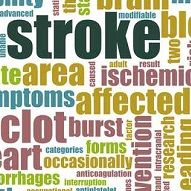Stroke: Do Perivascular Spaces Predict Endothelial Function?
Researchers have found an increased basal ganglia perivascular spaces is associated with a reduced plasma markers of endothelial function.

Researchers have found an increase in basal ganglia perivascular spaces is associated with a reduced plasma markers of endothelial function.
The research was conducted by Xin Wang, PhD, of the Division of Neuroimaging Sciences, at the Center for Clinical Brain Sciences in Edinburgh, UK, and colleagues and was published on the website of the Journal of Stroke & Cerebrovascular Diseases recently.
Past studies have shown that spaces that surround arteries, arterioles, veins, and venules known as perivascular spaces (PVS), can increase in size and number, but not whether PVS are markers for inflammation, endothelial dysfunction, or thrombosis, or some combination of the three. The authors say, “In the present analysis we test associations between PVS count and volume and plasma markers of endothelial function, inflammation, and thrombosis in the chronic phase after lacunar stroke or mild cortical stroke.”
In order to investigate, the researchers recruited 100 patients, 51 of whom had lacunar stroke and the remaining 49 had cortical ischemic stroke. The researchers described them with, “the median National Institute for Health Stroke Scale score was 2; 62% of patients had hypertension, 53% had smoking history, and 15% had diabetes.”
The researchers observed some associations, saying, “We found that PVS increased with age and hypertension on multivariable analysis, but not with smoking or diabetes.” Additionally, they say, “We also found that most of the blood markers that we studied were not significantly associated with PVS count and volume.”
However, they did find a negative association between basal ganglia PVS count and the von Willebrand factor (vWF) which is a marker for endothelial function. They note, “This association was the opposite to what would be expected if this were simply due to increasing age or smoking, and supports the concept that endothelial dysfunction is a contributing factor in the pathogenesis of cerebral SVD [small vessel disease]”.
They conclude by suggesting that future studies, with larger samples, should be conducted in order to confirm the associations revealed in this study, saying they should account for “other factors such as structural brain volume and SVD markers, demographic and vascular risk factors, and perhaps at a wider range of times after stroke.”
Further Coverage:
Impact of Coffee Consumption on Stroke
Exercise Works as Stroke Preventive
24-Hour ICH Score Better Prognostic Indicator than ICH Score at Admission